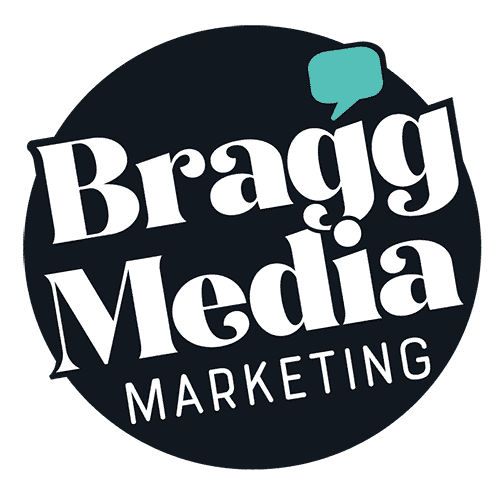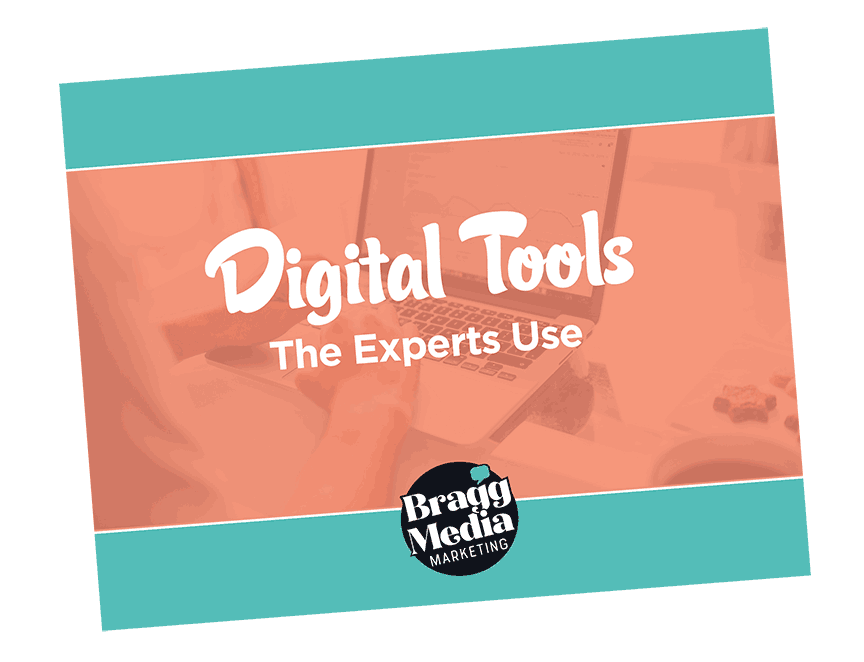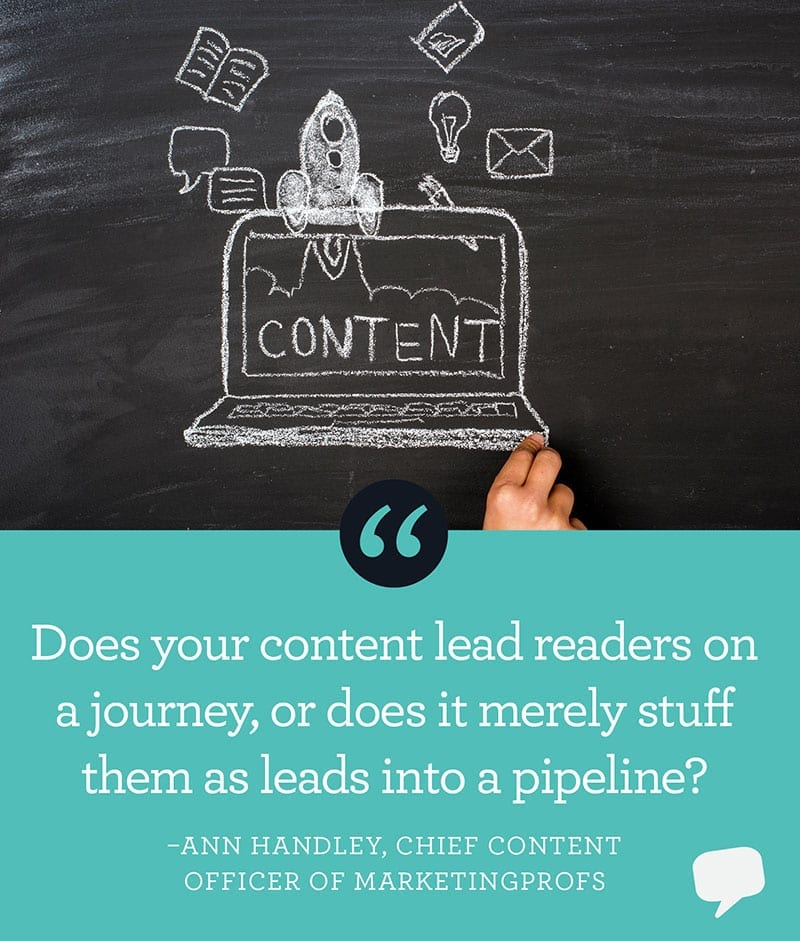
CTA, CTR, CRM, B2B, B2C ….
To the layperson, marketing lingo sounds like a different language. As annoying as buzzwords can be, understanding what marketing professionals are saying will benefit your business in the long run.
We want to help you make sense of this confusing vocabulary by explaining in layman’s terms exactly what some of these marketing buzzwords mean.
Bookmark this page and keep coming back. We will continually update this blog with more marketing buzzwords, defined!
Bounce Rate
Bounce rate is a common website metric that represents the percentage of people who visit your website and immediately exit your website after only viewing one page. The bounce rate offers some insight into how good your content is. If your bounce rate is high, then people are only viewing one page and they aren’t taking the time to explore for more information. If your bounce rate is low, then users are spending a lot of time on your website.
Here are typical reasons for a high bounce rate:
- Slow website
- Your call to action is unclear
- The content is boring
- You’re not offering anything new
A bounce rate of 80% or more is very bad whereas a bounce rate of 30-50% is good. To improve your bounce rate, first find the top pages with the highest bounce rate. In Google Analytics, go to Behavior > Site Content > Landing Pages. From there, ensure the following:
- You have created a great overall user experience on all devices
- Improve your calls to action
- Work on increasing your site’s speed
- Use more videos
- Position eye-catching images that captures attention
Brand Awareness
Brand awareness is the recognition, understanding and familiarity people have about the distinctive qualities of your particular product, service, logo and overall business. It is the most important part of a business’ growth strategy and serves as the foundation of marketing.
How often have you asked for a “Kleenex” instead of a “tissue”? We use “Jet Ski,” made by Kawasaki Heavy Industries, instead of “personal watercraft.” Gerber Childrenswear’s “Onesies” has become parents’ everyday nomenclature.
Branding isn’t limited to big brands. Learn more about personal branding here.
Marketers often struggle to apply a metric to brand awareness to demonstrate Return On Investment (ROI). You can gauge your brand’s awareness with website traffic numbers and social media engagement. However, it’s not a definitive grade on how well your brand awareness is doing.
Perhaps the most important part of brand awareness is building trust. Today’s audience don’t like pushy sales messages and the threshold for trust at a time when their phone is inundated with sales calls and their e-mail inbox is flooded with spam.
Some effective strategies for building brand awareness include:
- Don’t be afraid to get personal
- Get social with your audience by engaging with them on social media
- Telling your business’ origin story
- Create free content
- Sponsor events
Free Interactive Workbook
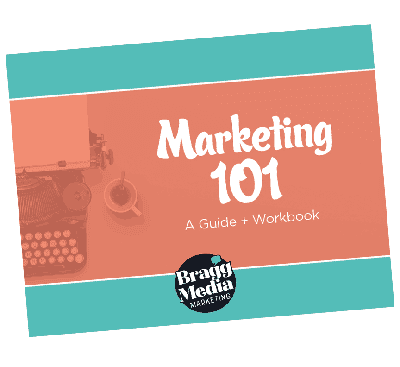
No one wants to spend time or money on marketing efforts that don’t work! This marketing workbook and guide will help you develop a strategy that brings results!
Brand Identity
Seth Godin, author and former dot com executive, has a great definition of a brand: “A brand is the set of expectations, memories, stories and relationships that, taken together, account for a consumer’s decision to choose one product or service over another.”
Branding incorporates design, communication, culture, vision, language, behavior and logo to tell the story of your business. A lot of visual elements come into play when creating a brand identity, such as colors, shapes, symbols and typography (fonts). However, there are a lot of esoteric elements that make up a brand as well, including your brand’s mission, vision, core values and differentiation. Branding is conversation people have about your brand and the ultimate feeling people have when they think about your brand.
 Graphic Design Packages
Graphic Design Packages
Professional, convenient, flat-rate graphic design
Business to Business (B2B)
B2B marketing centers on marketing services or products to other businesses or organizations. B2B marketing often is more informational than marketing toward consumers.
According to LinkedIn, “This is because business purchase decisions, in comparison to those of consumers, are based more on bottom-line revenue impact. Return on investment (ROI) is rarely a consideration for the everyday person — at least in a monetary sense — but it’s a primary focus for corporate decision makers.”
Because of this, B2B marketing often targets an organization’s staff member who has power over purchasing decisions. Common B2B industries include: digital subscriptions, security, office supplies, shared office space and insurance.
The best B2B marketing methods typically include: a great website, networking events, LinkedIn social strategy, affiliates and partnerships, event marketing and earned media awareness.
Business to Consumer (B2C)
B2C is an entirely different animal compared to B2B. The B2C target audience are more impulsive and instantaneous. Because the B2C audience has a short attention span, B2C marketing often tugs at an emotion with emphasis on immediate value. It’s for this reason why marketers study their customers’ demographics, age, race and gender, in addition to psychographics, the emotional motivation behind their buying decisions.
The best B2C marketing strategies include high-quality content that engages their audience; a robust, multi-channel social media strategy; video marketing; opt-in e-mail marketing; exclusive VIP programs; and personalization.
 Bragg Brand Bootcamps
Bragg Brand Bootcamps
For businesses that need a lot of brand identity work, sooner than later.
Buyer’s Journey
The buyer’s journey is the process a customer takes to become aware of, consider, evaluate and decide whether or not to purchase a product or service. This includes three stages:
- Awareness stage: The customer identifies that they have a problem
- Consideration stage: The customer defines the problem and researches how to solve the problem
- Decision stage: The buyer chooses a solution
To understand the buyer’s journey for a particular product or service is to better understand your customer’s needs, how to reach them and, most importantly, when to reach them. By nurturing your leads with important information about your offerings at each stage, three objectives have been accomplished:
- You are offering a solution to their problem
- You are “training” your audience on how to be good customers
- You save time with your sales efforts by pre-qualifying people, so by the time they inquire, they are ready to buy
Call To Action (CTA)
Simply put, a CTA is telling your customers what you want them to do when they see an ad, view a page on your website or watch a video.
“Sign up!” “Subscribe!” “Try for free!” “Get started.” “Learn more.”
These are examples of actions that you are calling your audience to carry out. In digital marketing, a CTA is a button or graphic that asks your audience to click. Netflix, for instance, uses “Join free for a month!” with “Cancel at any time” just above the brand’s red button.
CTAs ultimately help convert prospects into leads and into customers. They can result in a variety of different actions depending on the goal of the marketing effort. According to HubSpot, effective calls to action:
- Use actionable language
- The meaning of the CTA and landing page content should align
- Include a clear value proposition
- Play up time sensitivity
- Should be big
- Highly contrasting design (they shouldn’t blend in)
- Look clickable
- Prominently placed
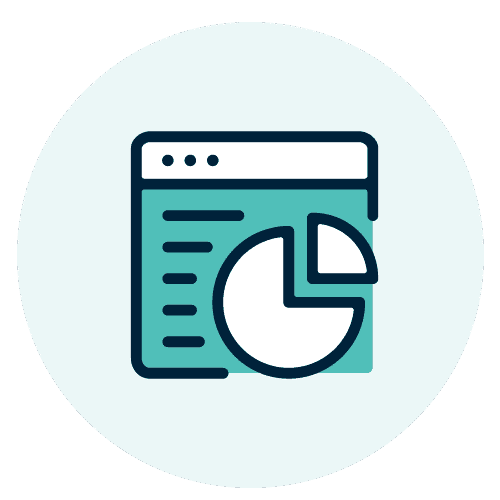 Website Audit
Website Audit
How well do you know your website?
Customer Relationship Management (CRM)
A CRM stands for Customer Relationship Management. CRM is software that stores and organizes your contacts. There are different types of CRMs for different industries. Your CRM is where information about customers and leads can be found.
Real estate agents and financial advisors use specific CRMs to keep their customer information organized — including contact information, birthdays, notes from meetings, information on their accounts, etc. Some examples of CRMs include SalesForce, MailChimp and our personal favorite HubSpot.
In addition to serving as a database, CRMs:
1) track information on your contacts, such as which pages on your website they have viewed
2) organize your contacts into lists, so you can target marketing e-mails and social ads toward their interests. Real estate agents, for instance, might have a list of buyers and a list of sellers
If you have a CRM and you have forms on your website, ask your website developer if the CRM is integrated with your website. This way whenever someone fills out a form on your website, their contact information is automatically stored into your CRM and their email saves to a specific list.
If you don’t have a CRM, check out HubSpot’s Free CRM. In addition to the contact organization software, HubSpot’s Free CRM offers:
- drag and drop email builders – similar to Constant Contact and MailChimp
- Email tracking and notifications
- Meeting scheduling that works in conjunction with your calendar
- Live chat on your website!

Engagement
Engagement is a marketing methodology and a metric.
Engagement marketing involves strategies that aim to build a rapport with your audience that results in feedback, collaboration, networking, sharing of content, positive reviews and more. Engagement marketing typically involves high-quality, valuable content that encourages interaction with your audience. For instance, tech-savvy consumers often flock to Twitter for customer service questions. Many brands segment their audience into Facebook groups, where they can interact with them based on their interests. Here’s more information on social media marketing.
Engagement marketing builds trust with your audience during a time when consumers demand transparency. Some great ways to keep your audience engaged is to reward them with discounts and being authentic in your marketing efforts. This means responding to negative reviews in a thoughtful, timely manner. Here are some tips on how to do this.
As a metric, engagement is an enviable result of marketing because it measures how many likes (and other reactions), shares and comments to a social media post. Engagement also can be measured by the number of website pageviews, the amount of time spent on a website, bounce rate (percentage of visitors who immediately leave a website), number of pages per session and top exit pages.
Some great ways to encourage engagement on your website include:
- Chatbot to answer questions
- Cornerstone content or pillar pages that serve as the ultimate how-to for a specific topic
- Online quizzes
- Ebook sign-ups
- Fast websites loaded with eye-catching visuals
- Entertaining and informative videos
Flywheel Method
A lot of marketing professionals talk about the sales funnel — attract, convert, close, delight. While it’s important to understand each of these stages, there’s a new marketing model in town — the flywheel. Traditional sales funnels focus on putting their customer through the business’ process. The flywheel method recommends developing a process around your customer.
Designed by HubSpot, a well-known marketing brand best known for their marketing software, the flywheel centers around the inbound marketing methodology. This process focuses on how to build a business that attracts, engages, and delights its audience. The result is a business that puts customers first.
When the flywheel is moving, your business is profitable. When it stops moving or slows, it means that something has hindered the customer process — a slow e-commerce website, lack of follow-up or the inability to answer sales questions.
When businesses are successful at applying this model to their business, they have a positive customer experience, including sales, marketing and customer service.
Geofencing
Geofencing is a location-based service that triggers an advertisement or other pre-programmed action when a mobile device enters or exits a geographical boundary (geofence). This practice typically uses Global Positioning (GPS) and Radio Frequency Identification (RFID) to establish the geographical boundary.
In addition to mobile devices, geofencing is used for vehicles in the shipping industry and drones for tracking. Geofence marketing, however, typically focuses on triggering specific messages based on location. Because geofencing is hyper-local, it produces fewer leads that are more qualified to buy.
A retail store, for instance, might use geofencing around their store to push out attractive promotions that bring more foot traffic to their store. When a customer is at a competitor’s location, geofencing marketing will deliver an ad that lures the customer to their product or service.
A lot of our clients instantly want to know the costs associated with location-based marketing. There are many factors that contribute to the price, such as advanced targeting and impression volume. Prices typically range from $4-14 Costs Per Thousand Impressions (CPM).
Impressions
This is an eye-roll worthy buzzword, because impressions are non-action based dependent results of an advertisement. Impressions represent the number of times your advertisement was displayed on a screen that the end user potentially has seen.
Unlike reach, the number of people who viewed your content, impressions include the number of times your content was viewed. If a user saw your Facebook boosted post five times in their news feed, that would count as five impressions.
There are two different types of impressions: served and viewed. Served impressions include ads that no one has seen. Viewed impressions — you guessed it! — represent the number of times your ad was seen.
This is the murky part of marketing that frustrates clients because they don’t care about the number of times an ad was seen. They care how many customers came from that ad! However, impressions give marketers an idea of how effective an advertising campaign can be. Even though the end user didn’t click on the ad, they will remember the ad later on. Certain marketing channels, such as Facebook, use an ad algorithm that works with an auction to determine the best ads to show the best audience. The number of impressions can tell you if your marketing message, target demographics and budget are working to deliver a well-executed ad.
Businesses that mainly rely on Inbound Marketing save more than $14 for every newly acquired customer.
Inbound Marketing
Inbound marketing is a methodology that centers around the idea of creating value for your audience that keeps them coming back to you for more information. Inbound marketing uses brand awareness strategies so that your audience learns about you, will go to your website to learn more about you and then to purchase whatever it is you’re selling.
Typically, this means high-quality, valuable content — such as a how-to blog post, video tutorials and webinars, ebooks and even social media graphics. Here’s more information about content marketing.
The goal for inbound marketing is to turn your followers into leads into customers and then into brand ambassadors. Inbound marketing uses helpful content to encourage their audience to fill out an online form, subscribe to your email list, sign up for your ebook, follow your blog or engage on social media. Common inbound marketing strategies include:
- Well-written website pages that are optimized for search engines
- How-to blogs that inform your process
- Regularly sharing website content to a variety of social media outlets
- Helpful videos on YouTube
- Public Relations initiatives that bring your brand earned media awareness
- Drip e-mail campaigns that keep brands top of mind with their customers
Inbound marketing aims to educate your audience about services and products with a look at your process, details on terms and conditions and information on best practices for using your products and services. All of this information pre-qualifies leads, so that by the time a potential customer contacts you, they are ready to make a buying decision. Read more about the effectiveness of an inbound marketing website.
This process builds organic relationships, establishes your credibility and positions you as authority in your industry. Unlike outbound marketing strategies, which include paid advertisements and promotions that focus on the short-term, inbound marketing is about positioning your brand for the long term.
Need some examples of Inbound marketing? Sign up for our free ebook here.
The results? Inbound marketing converts twice as many leads into customers compared to outbound marketing and at a 61 percent lower cost than outbound.
Key Performance Indicators (KPIs)
KPIs are specific metrics in marketing that measures the progress toward a defined goal.
Our colleague and partners at Chris Hervochon CPA CVA LLC, an outsourced accounting firm, prefers to call KPIs Key Predictive Indicators, because the metrics should provide insight for how an action will perform in the future. Check out his blog on why marketing KPIs are important.
Marketing KPIs run the gamut — from sales revenue to cost per lead and from organic traffic numbers to lead and conversion rates.
Landing Pages
A landing page is a single page on a website that serves as a one-stop-shop for an idea, a campaign or offer. This is the place where a user can find all of the information they need about a particular idea. They are often used in sales funnel marketing — leading the potential customer down a path of information until they are hit with a clear call to action.
Landing pages are an important part of digital marketing because their sole purpose is to generate leads for your business. In fact, the more landing pages you have, the more conversions you will see from your website. HubSpot reports that companies with 10-15 landing pages increase leads by 55%! Download our free ebook on how to create a landing page that generates results.
There are different types of landing pages:
- The click-through landing page serves as an information gateway that leads them to more targeted information. For instance, we designed this “Explore” page for Chris Hervochon’s Instagram account.
- Lead-generating landing pages don’t have any external or internal links. Their sole purpose is to capture a user’s information. These pages should not have a header or footer. Since the purpose of such pages is to capture a user’s information, don’t make it easy for them to leave the page. We developed several lead-generating landing pages for our free ebooks, which you can access here.
- Splash pages or viral landing pages are used to help spread word-of-mouth marketing. They have a simple, clear message, such as “Sign up for my webinar!” or “Countdown to my book signing – sign up to be notified.”
- Microsites are often referred to as landing pages. They are individual pages or a small group of web pages within your website that serve as a separate presence for a brand. Many microsites live on the same website with their own vanity URLs while some live on subdomains. This is a great blog from HubSpot on microsites.
Outbound Marketing
Outbound marketing occurs when a business reaches out to people to see if they are interested in their service or product. This could include cold calling prospects, direct mail, print or digital advertisements, pay per click ads, etc.
Outbound marketing tactics are notorious for high cost and low yield, difficulty in tracking return on investment (ROI) and an increased blocking technique (Do Not Call List).
In order for outbound marketing strategies to work, brands need a solid inbound marketing foundation. If businesses invest in thousands of dollars in a pay per click ad campaign, then when the user clicks on the ad, they should be taken to a robust website with more information. Without a user-friendly website, friction develops and there is a breach of trust.
We put it like this for our clients: If your house is a complete mess, the landscape is atrocious and the lights are out, how do you expect to welcome visitors to your home?
Reach
If you have boosted a Facebook post, then you’ve likely seen reach in the analytics. Reach is the number of people who have seen your ad or content.
Here’s how Facebook defines reach: “The number of people who saw your ads at least once. Reach is different from impressions, which may include multiple views of your ads by the same people.”
There are different types of reach associated with marketing:
- Organic Reach: The number of people who have viewed un-paid content
- Paid Reach: The number of people who viewed an ad or paid-for content
- Viral Reach: The number of people who viewed content that their friends shared
It’s important to note that like impressions, reach does not include any action taken. It only includes the number of people who viewed your marketing message.
An Entrepreneur's Starter Kit
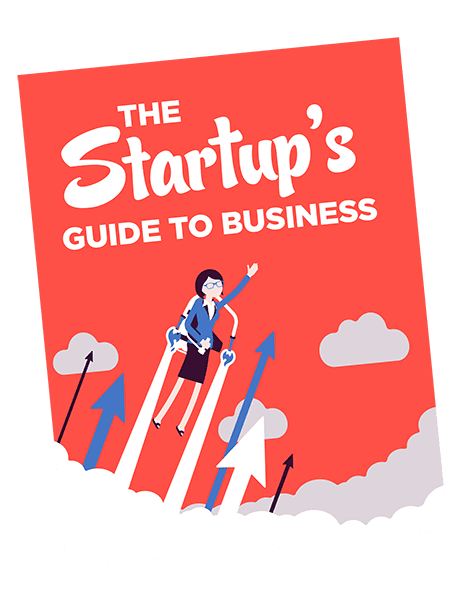
Whether you’re a first-time entrepreneur who recently launched your business or you have an entrepreneurial spirit, The Startup’s Guide to Business offers all of the information you need to know to compete in the marketplace!
Search Engine Optimization (SEO)
SEO plays such an important role in website design that we often forget that the average person doesn’t understand what it is. SEO is the practice of increasing the quantity and quality of your website traffic through organic search results.
Digital marketing pros aim to increase the number of people who happen onto your website through a relevant keyword search in Google, Bing, Yahoo! or Duck Duck Go.
There are two types of SEO: on-page and off-page.
On-page SEO focuses on individual pages of your website to rank higher in search engines and typically refers to the content and the source code on your website as opposed to external factors such as social media. Off-page SEO, on the other hand, involves other websites linking to your website, including social media accounts and digital listings. Cross linking with appropriate websites builds domain authority thereby increasing your search engine rankings.
For more information, check out our Beginner’s Guide to SEO.
SEO is a moving target that has changed many times over the years. Here’s an article on common SEO myths. Google typically ranks a website based on the user experience — focusing heavily on:
- Security: Make sure you have an SSL certificate installed
- Quality Content: Well-written blogs and pages with commonly used long-tail keywords, such as “common SEO mistakes”
- Site Speed: Ensure your images are optimized for the website. Test your site’s speed with pingdom.
- Time spent on website: The amount of time a user spends on your website signals to Google that your content is helpful and worth indexing
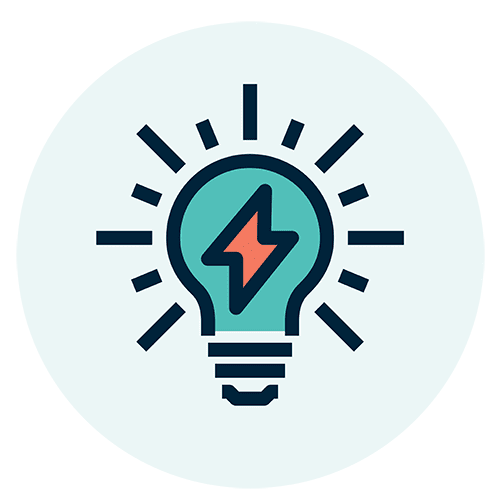 Marketing Retainers
Marketing Retainers
Branding, creative, digital and strategy with results.
Top-of-Mind Awareness (TOMA)
When you think of a burger, which restaurant immediately comes to mind? Five Guys? In-N-Out Burger? Wayback Burgers? If you’re buying a car, does Volvo pop into your head first? Or BMW? Honda?
Top of mind is a phrase marketers use to describe when a brand is at the immediate forefront of consumer’s buying decisions. Top-of-Mind Awareness (TOMA) is similar to brand awareness in that the idea is to continually promote a brand to stay relevant in the marketplace. Sometimes, these terms are used interchangeably. However, TOMA often refers to the measurement of a brand’s position in the marketplace.
TOMA represents the highest level of brand awareness with the following lower level brand awareness:
- Brand recall: When you run out of your favorite deodorant, do you keep buying the same brand or do you buy something new? Brand recall happens when a customer purchases from a brand over and over again as needed. It measures how well your brand is connected to a product or service.
- Brand recognition: This term refers to whether consumers can correctly identify your brand when they see your logo, tagline, packaging, jingle or advertising.
- Unaware of brand: This means the public doesn’t know anything about your brand.
Some ways to measure TOMA include:
- Search volume: Use Google Webmaster Tools or another service to find how your brand ranks with industry keywords.
- Direct traffic: In Google Analytics, determine how much “direct traffic” your website is receiving. This represents people who are actively searching for your brand.
- Social media awareness: Use social media listening tools such as Sprout Social or BrandWatch to see what people are saying about your brand
- Social media engagement and reach: How many fans or followers do you have? How often are they engaging with your posts?
- Surveys: Find out how people identify your brand with carefully crafted questions that reach a variety of different people. The goal is to gauge your audience’s knowledge of your brand and how well your marketing is performing.
Some ways to achieve TOMA:
- Stand out with eye-catching brand identity and a memorable tagline
- Make an emotional connection with your audience
- Grow your subscribers with informative newsletters, free ebooks, white label products
- Stay consistent with social media, enewsletter and overall customer experience.
